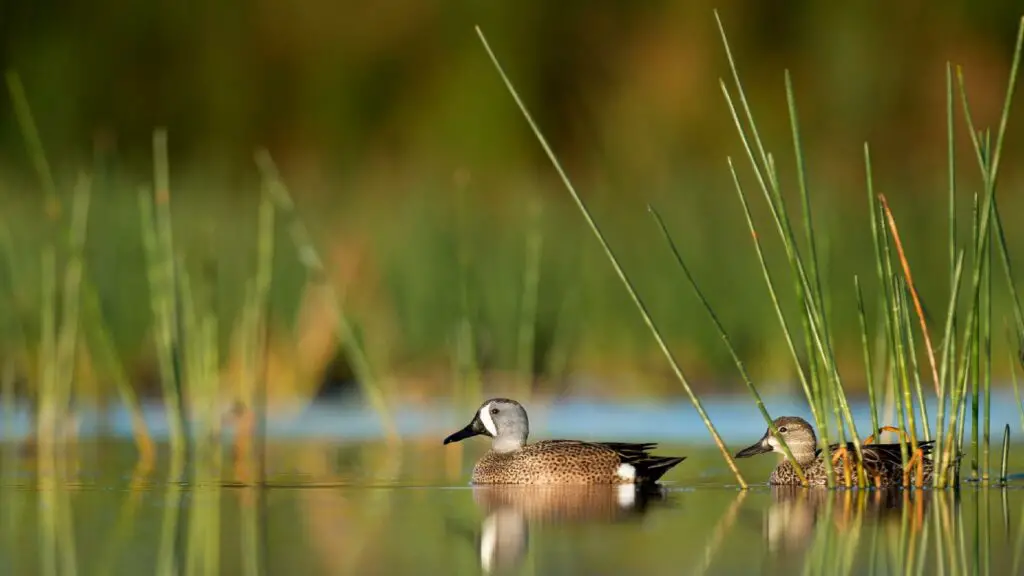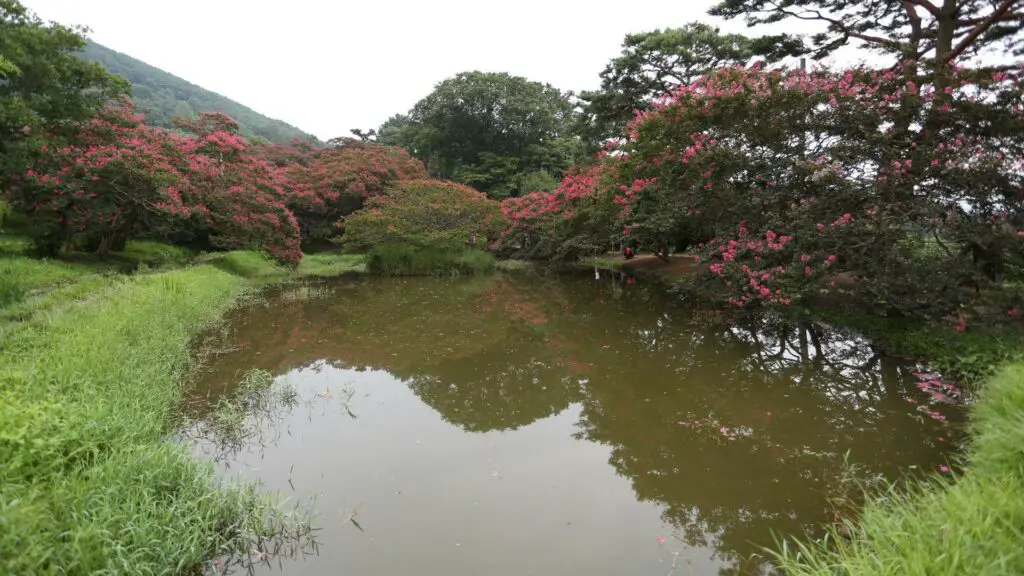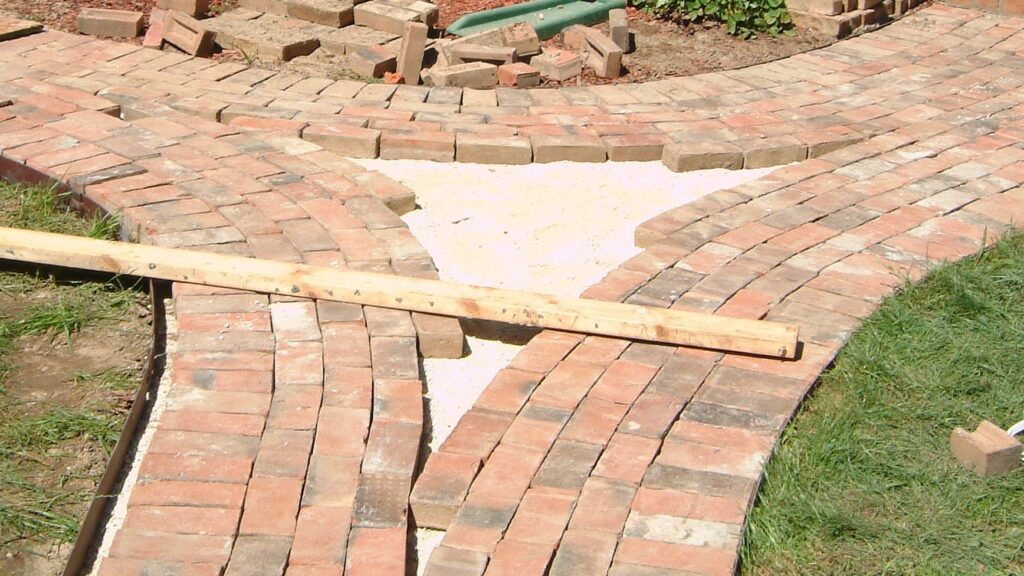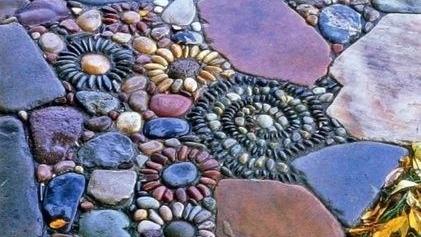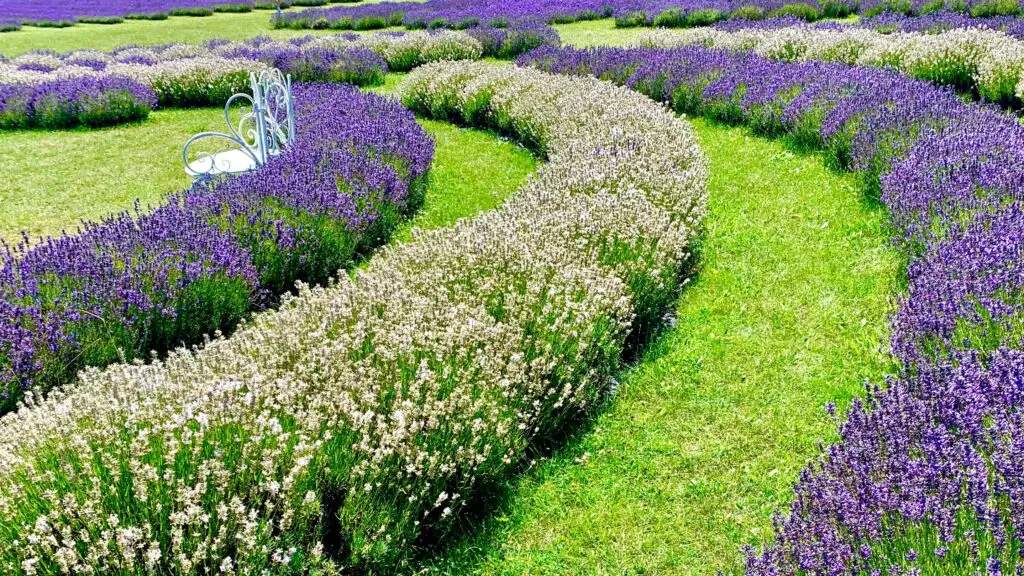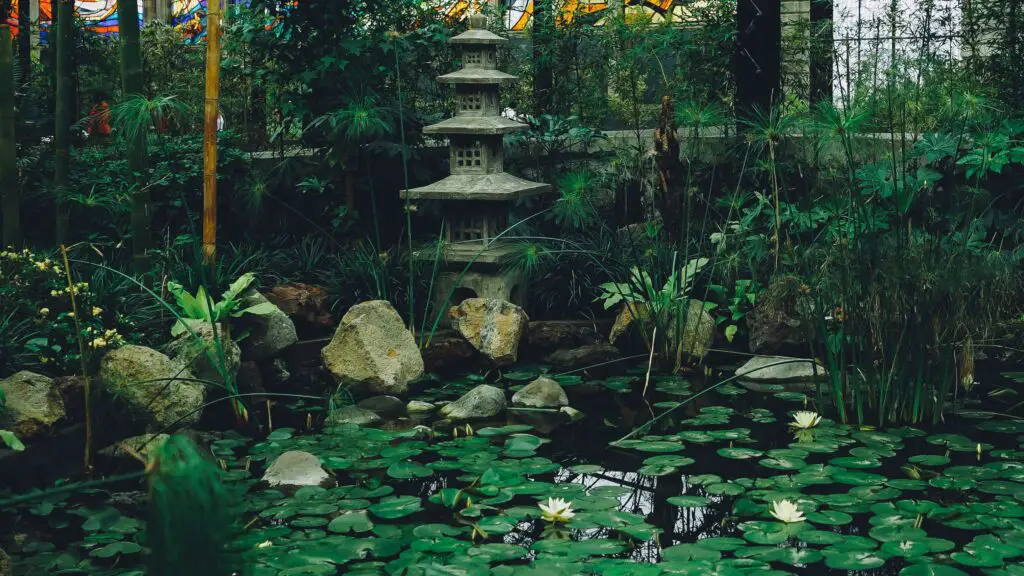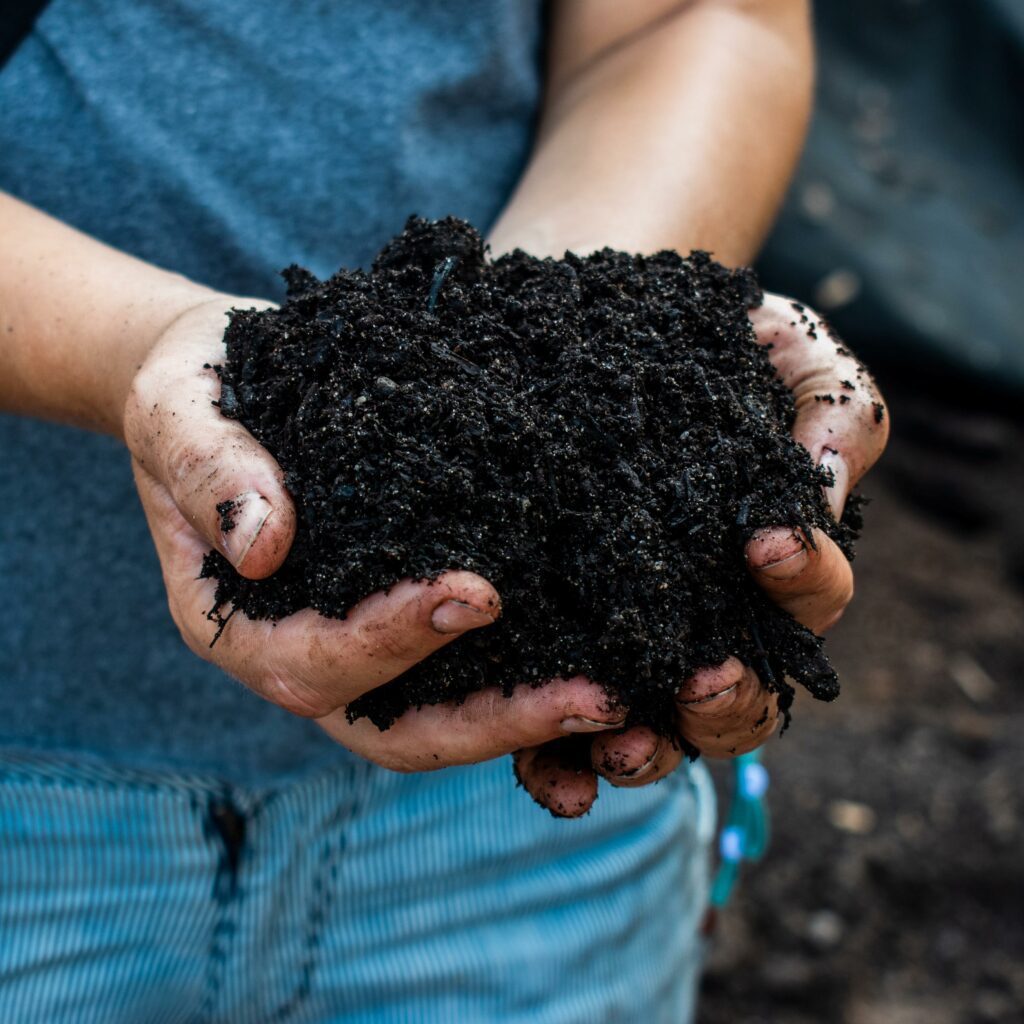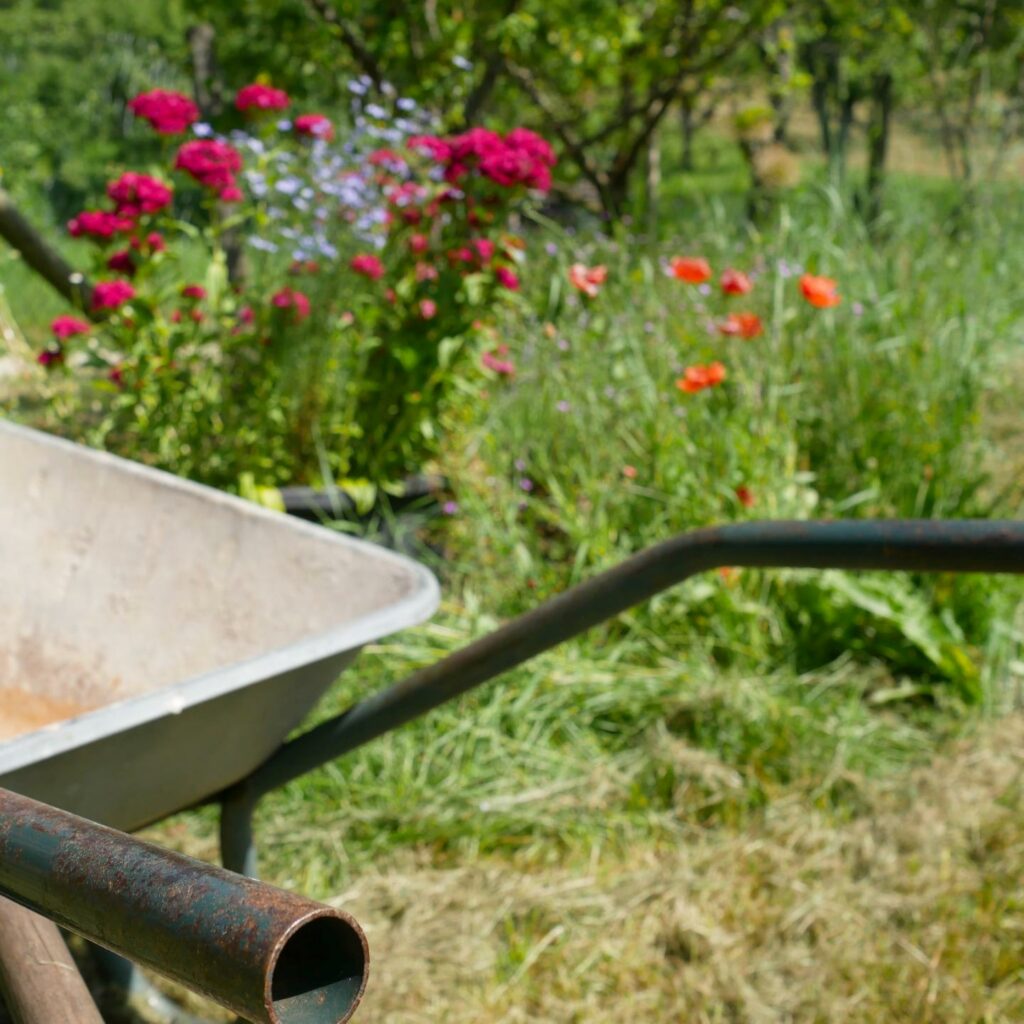The term “Natural Pond” indicates a harmonious and balanced setting where plants, animals, microbes, and water support each other to develop, decompose, and regenerate. Many natural ponds are man-made and completely natural, created by mother nature herself. For the most part, when referring to natural ponds, we are talking about ponds with an earth bottom with no synthetic liner that is naturally maintained with no use of chemicals, filters, or pumps.
This article will explore some of the similarities, differences, and environmental impacts of these various types of Natural ponds.
Biological Ponds
All natural ponds, big or small, can be classified as biological ponds. You really can’t maintain a body of water without any biological processes taking place, even if you spoil the water with high doses of chemicals; eventually, the chemicals will wear off, and the natural biological processes will take over again.
All biological (natural) ponds are cleaned and maintained by microorganisms, plants, and decomposing bacteria. The microorganisms utilize the contaminants present in the forms of heavy metals, organic, and inorganic substances, helping to reduce the pond water pollution and clean the water.
Aquatic Plants
All-natural (biological) ponds rely on plants to keep them clean. The plants in the pond play a critical role in balancing a biological pond, taking in the nutrients, and cleaning the pond water of pollutants. These plants are classified according to the functions that they perform for the pond.
- Oxygenating pond plants such as Hornwort and Water Thyme help our pond balance by taking in nutrients, adding oxygen to the water, and providing shelter for spawning and small water creatures of all types.
- Floating plants are typically heavy feeders and fast growers that provide fish and shade for the pond water. Plants such as Water Lettuce, Floating Fern, Fairy Moss, etc., will suppress the algae growth by absorbing the nutrients and being in direct competition with algae.
- Bottom growing plants with long tubular stems such as lotus and water lilies help take nutrients out of the water and help to shade the surface of the water, which reduces algae and keeps the water cooler.
- Marginal Aquatic plants would include the reeds, rushes, and grasses that grow in zero to ten inches of pond water. These plants also remove nutrients from the water, shade the water, provide cover for animals and help to reduce sediment runoff into ponds.
Plant Basics
- Pond Plant Coverage: Every small or large pond should have 60-70% of aquatic plant coverage.
- Extensive root system: The integrated root system will absorb the nitrogen, phosphorus, and other elemental pollutants from the pond water and act as a storage house for suspended solids.
- Attractive plants: It’s a fact that the more beautiful pond plants we have in the pond water, the fewer algae will be present. Flowering and beautifully colored pond plants such as water lilies, Iris and Taro, beautify our ponds, clarify our water and provide habitat for wildlife of all types.
Bacteria
Bacteria and organisms in the pond work tirelessly with the pond plants to help keep our water clean. Adding supplemental aerobic and anaerobic bacteria to any pond will help to speed up the process of breaking down the debris in the pond, which will, in turn, make those nutrients available for the plants. The bacteria, enzymes, and other microscopic pond inhabitants consume nutrients to live.
Balance
As we have described above, the natural ponds can only maintain themselves if they are in balance. A proper measure of water, plants, and wildlife will allow a natural, biological pond to balance itself without the interference of humans. Any chemicals added to the pond will affect this balance and disrupt the natural processes that are helping to keep the pond clean.
Case study related to Biological Ponds
A Large natural pond will have the highest Biodiversity present in an area. The Global Conservation Policy to protect biodiversity promotes all kinds of ponds, either large natural ponds, small backyard ponds, or constructed wetland filtration systems.
The relationship between size and diversity for 80 ponds in Switzerland using aquatic plants, aquatic animals, and their richness (number of species) and conservation value (no. of species and their rarity) were studied.
It has been found that the small biological ponds contain more species and higher conservation values than a single large pond. (Oertli et al., 2002). I would surmise that this is due to the relatively larger amounts of plants in small ponds.
Types of Natural Ponds
There are multiple natural pond types that are all more similar than different. They all rely heavily on biological processes and balance to maintain themselves.
Waste Stabilization Ponds
These ponds do their work through the natural water treatment process involving the ultraviolet radiations in sunlight, high temperature, pH fluctuations (due to algal photosynthesis), and plant biome to inactivate the pathogens, reduce the BOD, stabilize the pollutants present in wastewater. (Ho, Van Echelpoel, & Goethals, 2017)
Existing wastewater cleaning technologies and equipment are costly and require a large amount of energy to run the pumps, agitators, and mixers.
By utilizing the natural processes described, the stabilization ponds can safely and economically turn chemically laden and polluted water into water suitable for irrigation and to release back into the groundwater if given enough time.
When cleaning water without any circulation or agitation, the process simply takes longer, but this is not a reason to avoid using these ponds; it is merely necessary to realize and acknowledge that mother nature takes time to fix our imbalances.
Importance and Applications
This wastewater treatment strategy is widely practiced in countries that have warm climates. Anaerobic ponds (removes almost half to 2/3 of BOD), Facultative ponds (maximum decomposition of organic matter and removal of other pollutants), and Maturation ponds (placed in series only when highly efficient removal of pathogens is required) are designed in series for the efficient treatment of wastewater. (Coggins, Crosbie, & Ghadouani, 2019)
These ponds help mitigate the increase in the level of diseases caused by drinking unhealthy and heavy water due to the improper disposal of human and animal wastewater and the dumping of industrial pollutants.
Rather than these contaminated waters being dumped directly into lakes and rivers, they can instead be diverted to the treatment ponds to allow the needed time for them to regain their biological balance.
Waste stabilization ponds require large areas and hot climates. They are most often used in the Southwestern US or hot areas of other countries.
It is a time-tested process that cannot be established in towns or cities but instead requires more rural settings for their installation.
Waste stabilization ponds can treat sewage, industrial, and almost all kinds of wastewater.
During the treatment processes, nitrogen, phosphorus, heavy metals, suspended solids, and pathogens are removed to a level that makes the water safe for use as irrigation water.
Retention ponds
These ponds are man-made and are natural bottomed. They are strategically placed near developed areas to alleviate storm runoff and flooding concerns. These ponds take in the runoff water, which may contain sediments, fertilizers, and various hazardous chemicals given off by industry, automobiles, etc. The water is held in these ponds and allowed to slowly be treated by plant material, bacteria, and other pond organisms, just as with any other natural pond.
Sometimes these ponds are helped along in the process by first allowing the water to run through or over constructed wetlands.
Constructed Wetlands are shallow water biofilters that use the natural potential of hyper-accumulator plants and either surface flow or sub-surface flow to clean water. Rooted plants along with gravel and sand are used to absorb, stabilize, evaporate, or degrade the pollutants in wastewater. The water slowly passes through the media, allowing the suspended solids to settle out and the contaminants to get absorbed and remediated by the plants. These constructed wetland systems are often used to clean greywater, Industrial-waste-water, Municipal-waste-water, and storm-water runoff.
Natural Wildlife Ponds
These are ponds built specifically to encourage animal inhabitants, creating a more biodiverse environment. “Nature will grow under Natural conditions” is the phenomenon behind every natural wildlife pond. This is a pond in which no chemicals, filters, or pumps will be used while supporting the growth and development of animal and plant life at the same time and a low cost. (McCance et al., 2017)
Once again, the pond’s health is mainly dependent on aquatic plants. The pond plants provide oxygen, absorb carbon dioxide, phytoremediation pollutants, and provide cover for animals of all types.
Selecting Native plants, especially the Native Grasses, is often a great way to get the ecosystem of a new pond started. The native grasses establish quickly and help to encourage further plant growth and minimize erosion. Examples would include; Feather-grass, Zebra-grass, Silky-thread-grass, Ruby-grass, Northern-sea-oat, etc.
A wildlife pond is helpful in the conservation of urban and suburban biodiversity by providing food, shelter, breeding habitat, and food-chain sustainability.
Shallow regions are planted with marsh and littoral plants (Spiny-rush, Cattail, Fat-hen, Bullrush, Alkaliweed, etc.), while the Creeping Phlox, Kangaroo raw, Blanket-flower, Sedum, Columbine, etc. These are good all-around pond perimeter plants to attract wildlife.
Natural Fish Ponds
The difference between a wildlife pond and a fish pond may be nothing at all except that some natural ponds are built and maintained specifically to raise fish.
A fish pond will usually have some deeper areas for the fish and underwater structure to encourage spawning and provide cover.
In natural fish ponds, fish will eat, live, poop, and die, all in that one body of water. For any of you who have had a fish tank, you realize that this is no small feat.
The dead bodies of fish, their excretions, and any debris that falls in the pond add nutrients to the water. The only way to control the water quality in natural fish ponds is through the use of aquatic plants and proper fish stocking.
Algae grow by utilizing these nutrients from the pond water, and if left unchecked, may tend to take over the pond. Selecting bottom and vegetation feeding fish will help nature take care of some of the algae, but the heavy lifting, as with all of the other biological ponds, is always done by the pond plants.
Historically, fish ponds were a way that a family or community could raise more livestock for human consumption that is easy to maintain and readily available for harvest, no matter the season of the year.
Some examples of large fish ponds which were used to compensate the food needs of local inhabitants as well as to earn profit by selling the aquaculture are listed below:
- The Fish pond of La Cambre Abbey in Brussels.
- Chinese Garden of Friendship in the Sydney.
- Hawaii, USA, native Hawaiian used them extensively.
- Coarse Fishing pond in England
The question is how to maintain a balance between the number of nutrients and algae growth? The answer is “through the wise selection of pond plants.” They will take up the excessive nutrients from pond water before being taken up by the algae through their extensive root system and efficient phytoremediation properties. Microorganisms, also called Biofilters, play an essential part in keeping the pond water clean and clear. (Thi Da et al., 2020)
Koi Ponds
Koi ponds are often built specifically for Koi fish. The Koi is a Japanese relative to the common carp. People enjoy their mellow and relaxed demeanor as well as their bright and flashy colors. While constructed specifically for the fish, most of these ponds end up being naturally maintained biological ponds as well. It is undoubtedly true that Koi purists may believe that the Koi require a smooth-sided, man-made, mechanically, and chemically treated pond; it is certainly true that these fish can live quite happily in natural biological ponds as well. They simply aren’t as easy to see and interact with in natural ponds due to the plant cover.
Due to the pond owners ‘ lack of education and impatience, many mechanically and chemically maintained ponds are simply over-complicated and over-treated. Humans are often too impatient to wait on mother nature to balance their ponds, so they go to great lengths installing mechanicals and dumping in chemicals in an all too often futile attempt to clean their pond. This is really too bad because nature will gladly do all of the heavy lifting if we just give it time.
Some examples of Mechanical Systems used in Koi ponds:
- Biological filters: Sand filter, Trickle filter, Crossflow filter, etc.
- Ultraviolet light: Used to sterilize the water from free-floating bacteria, pathogens and eliminate the algae by breaking it into clumps and then removing it using the mechanical filters.
- Install a Bog into the Pond: This is a manufactured solution that is almost natural and should be used in virtually any pond with water quality issues. Floating natural bogs do an excellent job filtering water and removing nutrients and contaminants. In a koi pond, we can float man-made plant islands in the water, which mimic the natural bog and may contain plants such as Holy rope (Eupatorium cannabinum), Bead-fern (Onoclea sensibilis), Water Iris (Iris pseudacorus), Horsetail (Equisetum arvense), Day lily (Hemerocallis spp.), etc. (Nordbakken, Ohlson, & Högberg, 2003)
References
Coggins, L. X., Crosbie, N. D., & Ghadouani, A. (2019). The small, the big, and the beautiful: Emerging challenges and opportunities for waste stabilization ponds in Australia. Wiley Interdisciplinary Reviews: Water, 6(6), e1383.
Ho, L. T., Van Echelpoel, W., & Goethals, P. L. (2017). Design of waste stabilization pond systems: A review. Water Research, 123, 236-248.
McCance, E. C., Decker, D. J., Colturi, A. M., Baydack, R. K., Siemer, W. F., Curtis, P. D., & Eason, T. (2017). Importance of urban wildlife management in the United States and Canada. Mammal Study, 42(1), 1-16.
Nordbakken, J., Ohlson, M., & Högberg, P. (2003). Boreal bog plants: nitrogen sources and uptake of recently deposited nitrogen. Environmental Pollution, 126(2), 191-200.
Oertli, B., Joye, D. A., Castella, E., Juge, R., Cambin, D., & Lachavanne, J.-B. (2002). Does size matter? The relationship between pond area and biodiversity. Biological Conservation, 104(1), 59-70.
Thi Da, C., Anh Tu, P., Livsey, J., Tang, V. T., Berg, H., & Manzoni, S. (2020). Improving productivity in integrated fish-vegetable farming systems with recycled fish pond sediments. Agronomy, 10(7), 1025.

